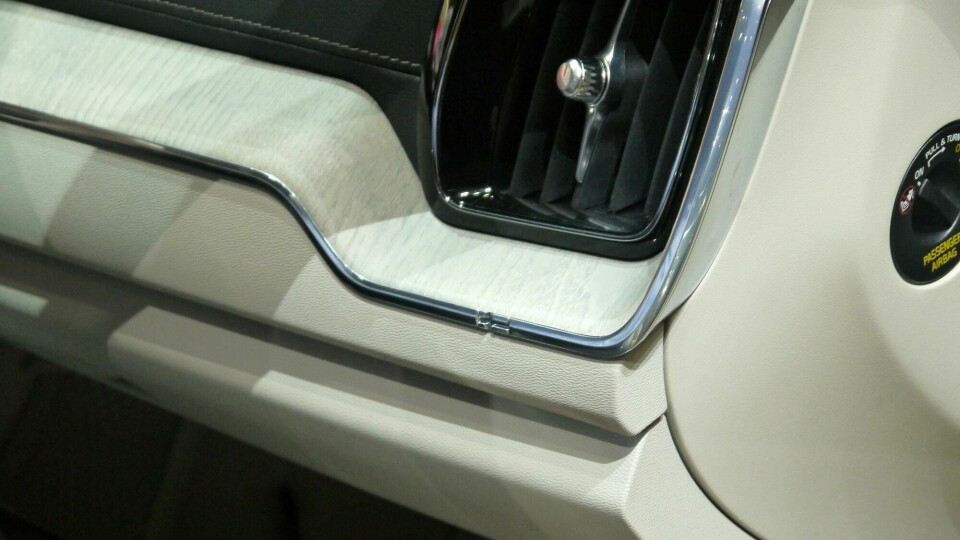
Geneva 2017: Volvo XC60 cabin flags up its roots
The new XC60 shows how fundamentally Nordic design influences Volvo interiors
Part of Volvo’s masterplan for its modular SPA platform is not simply the sharing of big lumps of chassis and hidden plumbing, but also common interior features like the delightful diamond-pattern knobs and switches that decorate the cabins of the XC90, S/V90 and now the freshly unveiled XC60 SUV.
Climb aboard and the centre tunnel in particular looks very familiar from recent big Swedes. However, just as the S/V90 moved things along from the XC90, so the XC60 explores its own way of channelling Scandinavian furniture vibes into automotive interiors.

The dash panel in front of the passenger is a case in point. The vertical section has been pushed back, creating a recess sheltering under the overhang of the leather-stitched upper surface. Below, a narrow shelf juts out, making a charming feature of a wide ribbon of trim veneer that weaves its way from the column shroud to the passenger door, terminating by wrapping around the nearside air vent. Available veneers include pale, open-grained wood as a well as a more technical aluminium mesh.
“We carve out a volume from the instrument panel that would normally be filled in any other SUV,” explained Niklas Palm, senior manager of interior design at Volvo, while showing CDN around the new car. “We create three different layers – the top is a surfboard thin layer, then the decor in the centre, then the lower IP with a thin chrome strip at the edge.”
The meandering metal strip is a lengthy part, though not quite as long as it seems. Near the vent there’s a cute little Swedish flag carved into the chrome, seemingly one of those charming little details that Volvo has been scattering around its cabins of late. It memorably stamped “Since 1959” into the seatbelt buckles of the XC90, for example, to remind people of just how long it’s been working on passenger safety.

The little dashboard Swedish flag isn’t quite as whimsical as it appears, however. Half the flag belongs to one trim piece, half to another. The two halves overlap where the flag’s vertical bar appears, providing a manufacturing tolerance that might otherwise have required an ugly break in the metal strip. Palm dreamed up the flag as a clever piece of disguise.
“The reality is it’s settled down so much with the manufacturing that we don’t really need it now,” confessed Robin Page, vice president of design at Volvo. But evidently the design team liked the little flag so much they’ve decided to keep it.



